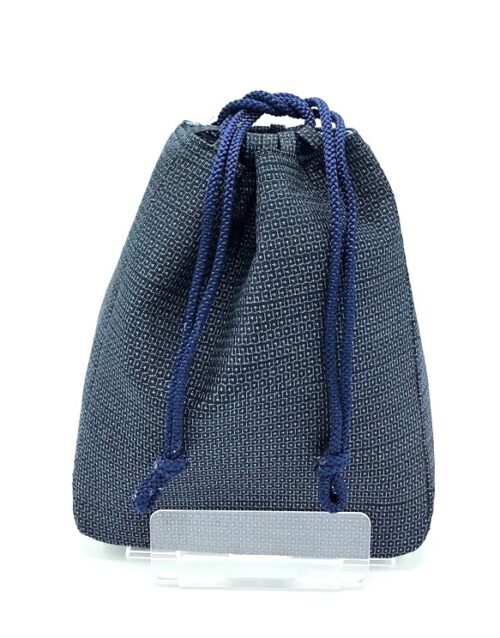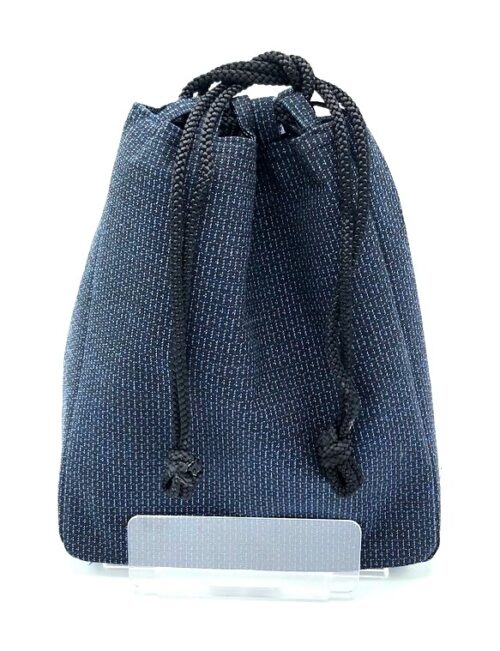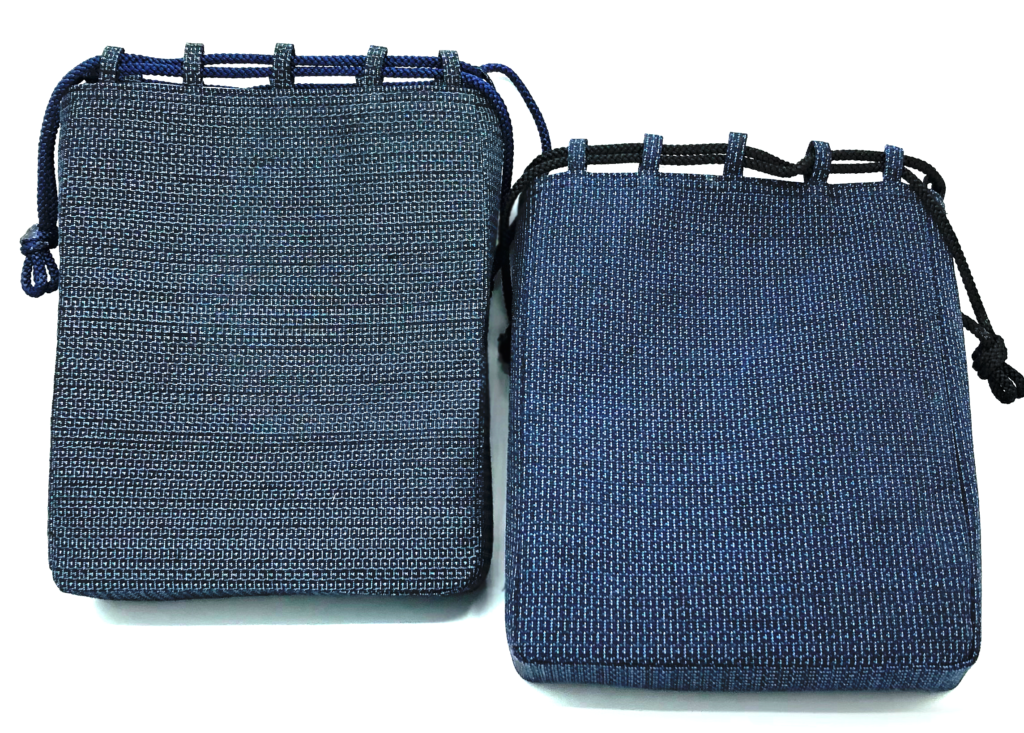Do you think these Shingenbukuro are identical?
They appear to be exactly the same, but there are big difference of the concept. ("Hare to Ke" in Japanese) People distinguished when the things to be used based on individual occasion by centering the religion in the daily life. We found these vintage Kimono by chance as we unsew a garment. Most men's Kimono are made very simple compare to women's gorgeous and colorful Kimono. The textiles of men's Kimono are used for different purposes in accordance to the occasion. (Hare = formal & special occasion, and Ke = casual, daily scene). The left Shingenbukuro in above picture is made from the highest quality Kimono and right one is made from daily Kimono.

Shiozawa Tsumugi Shingenbukuro
Shiozawa Tsumugi is one of the Japanese traditional highest Kimono textile besides Yuki Tsumugi and Oshima Tsumugi. Shiozawa Tsumugi was developed based on "Echigo Jofu" style (traditional textile of Echigo region in Japan) which has been handed down since Nara period (710). Shiozawa Tsumugi reached the peak of production in Taisho period (1912) but with the outbreak of the WWII, the production was restricted because it was too luxurious.

Wool Kimono Shingenbukuro
Don't worry. it's not a copy of above picture even it looks the same as Shiozawa Tsumugi. This Shingenbukuro is made from men's wool Kimono which is worn as everyday clothes. It's mixed fabric (Silk-Wool) and excellent to protect from cold weather. It feels very soft.
We use various textiles for upcycling. Usually we determine what kind of fabric Kimono has based on label being attached on it. But it's sometimes not easy to find out without any information. Since we stay at home during holiday season due to corona virus and have enough time, we made some experiments to research the fabric.
So we burned silk, mixed fabric, rayon, wool, chemical fiber... and observed how it goes.
The quality of real silk is not only about beautiful appearance. Silk didn't burn...
Other textile like as silk-wool has also good quality. The each character of textile can be connected to the Japanese "Hare to Ke" concept. The more we learn Japanese Kimono culture the more we find the deep truth. Maybe what is essential is invisible to the eye...
Please check both Shingenbukuro in our shop if you like.
